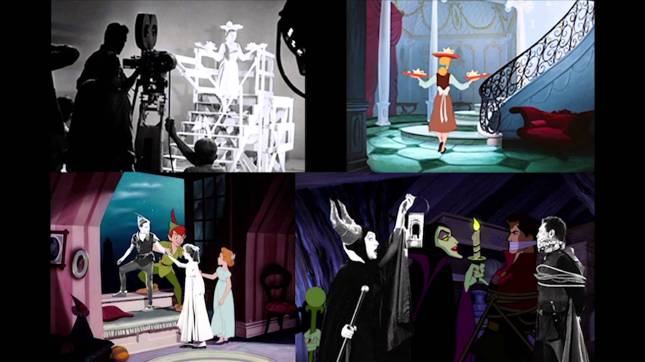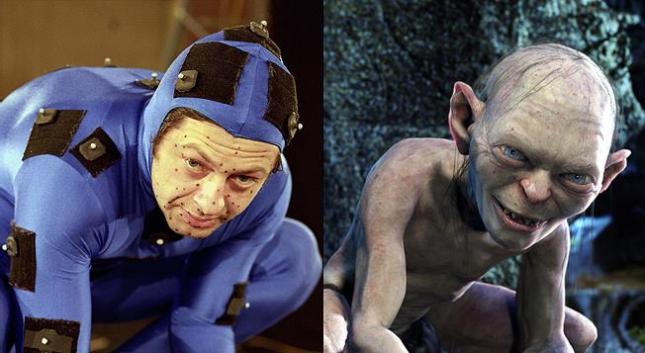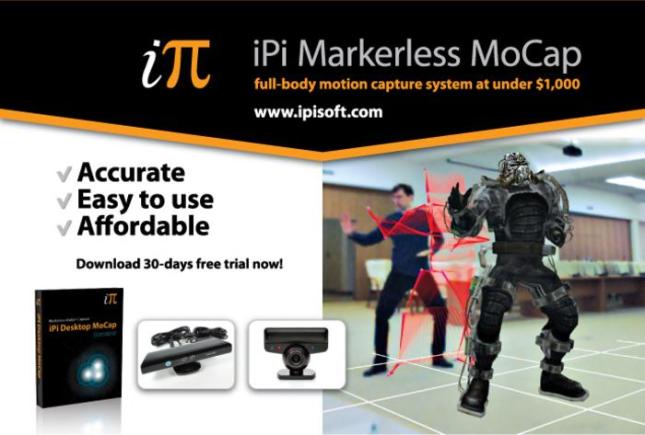Motion capture (or Mo-Cap for short) is a process of capturing actions or movement of people or objects and translating it into a 3D animation. This process is used primarily in military, entertainment, and sports for computer vision. This is also used to create motion animations much easier especially for digital characters in film and video games and is preferred over key frame animation.
An early form of motion capture came in the form of rotoscoping. Rotoscoping is an animation technique used by animators trace over footage, just like motion capture except that the original actor is drawn over. So in way it is a similar process to motion capture. While motion capture transfers animation data over to computer generated characters, rotoscoping is used to draw a new character overlapping the actor.

Disney movies used this technique (from: youtube.com)
Motion capture has been used in numerous films such as the Lord of the Rings trilogy, Avatar, Rise of Planet of the Apes and its sequel Dawn of the Planet of the Apes. The film to use real time a motion capture system was The Lord of the Rings: The Two Towers. This was used to stream the performance of Andy Serkis into the CGI skin of the character Gollum as it was being performed.[1]

Andy Serkis as Gollum (from: animationxpress.com)
For gaming it has been used to capture actions of actors to incorporate them into in-game characters. Games development is also the largest market for motion capture, mainly due to video games drawing as much revenue as movies meaning high demands for massive amount of quantities for motion capture. For the most part there are 2 types of character animation for games, real time playback and cinematics. With real time allowing the player to use pre-created moves (or rigs) to execute specific actions while cinematics are for cutscenes such as fully rendered movies like intros and in-game cutscenes.[2]
There are different types of motion capture including magnetic motion capture, mechanical motion capture, and optical motion capture.[3] Magnetic motion capture involves using sensors on the body connected to a control unit providing real time movement. Mechanical motion capture involves a performer wearing metal strips like a skeleton with each joint having a sensor. In addition the performer can wear gloves or use contraptions like articulated models or mechanical arms for key framing. Optical motion capture captures data digitally and is widely in digital media such as animation and video games to bring more life into the character. This method also uses reflective markers placed onto the actor’s suit making it easier for software to identify the position in 3D.
Each of these types comes with their own pros and cons.
- Magnetic motion capture as already provides real time movement but also provides no correspondences making positions and rotations absolute, and also it is cheaper than optical motion capture. However because the actor has to be connected to a device it is difficult to move around. Also the method is affected by magnetic fields so it is often a recommendation to use special stages.
- Mechanical motion capture in contrast to Magnetic Mo-Cap is not affected by magnetic fields but it does have its flaws. One of which being that the movement is not realistic and technology use does not acknowledge the ground so actions like jumping cannot be done, and also the equipment has to be recalibrated often making it quite problematic.
- Optical motion capture allows the actor to move freely as they like due to the suits light weight, allowing more actions to be captured. Unfortunately it is very expensive, the markers on the suit can be hidden by props and other actors, and are prone to light interference.
For the creation of 3D animation there advantages that motion capture has over traditional animation such as its near real time movement reducing the cost of key framing, secondary motions can be recreated easily, and also there can be potential for free software and third party solutions reducing costs. Among the disadvantages of motion capture includes the obvious cost of the software, movement that does not follow the laws of physics cannot be captured, and if the character models proportions are larger than the actors then the movement might be dodgy.
We have been using a piece of software that supports motion capture and that is Autodesk MotionBuilder. MotionBuilder is used for motion capture and is also used for virtual production and keyframe animation. The features of MotionBuilder include real time display and animation tools, facial and skeletal animation, and “Best-of-class” support for motion capture devices.

Autodesk MotionBuilder Logo (from: en.wikipedia.org)

Autodesk MotionBuilder (from: renderositymagazine.com)
There are other software that supports motion capture including Brekel and iPi Soft. Both of these motion capture software support markerless motion capture and can use off the shelve cameras like the Xbox Kinect.[4][5]

iPi soft (from: ipi-mocap-studio.en.softonic.com)
References
[1] Gollum Actor: How new motion-capture tech improved The Hobbit, https://www.wired.com/2012/12/andy-serkis-interview/
[2] Who uses motion capture?, http://metamotion.com/motion-capture/motion-capture-who-1.htm
[3] Types of Motion Capture, https://sagarlonkar.com/about-2/motion-capture/types-of-motion-capture/
[4] Brekel, http://brekel.com/
[5] iPi Soft, http://ipisoft.com/